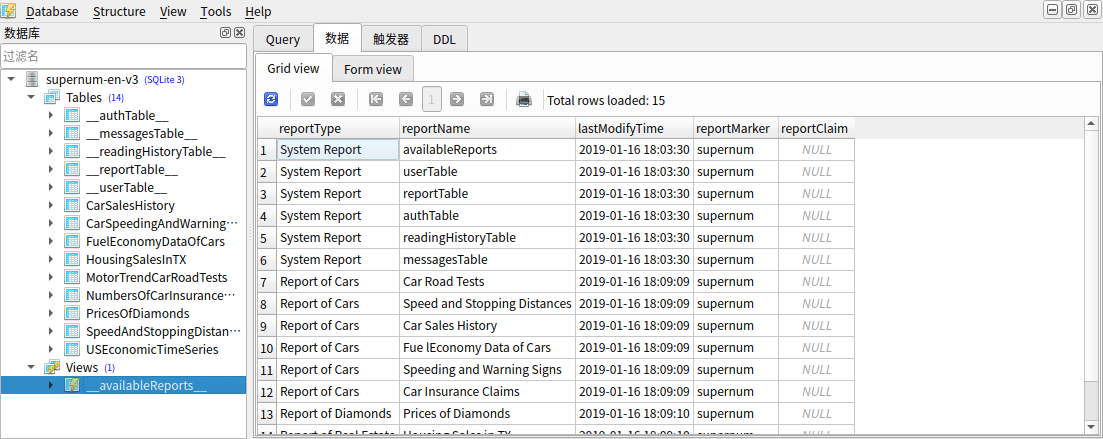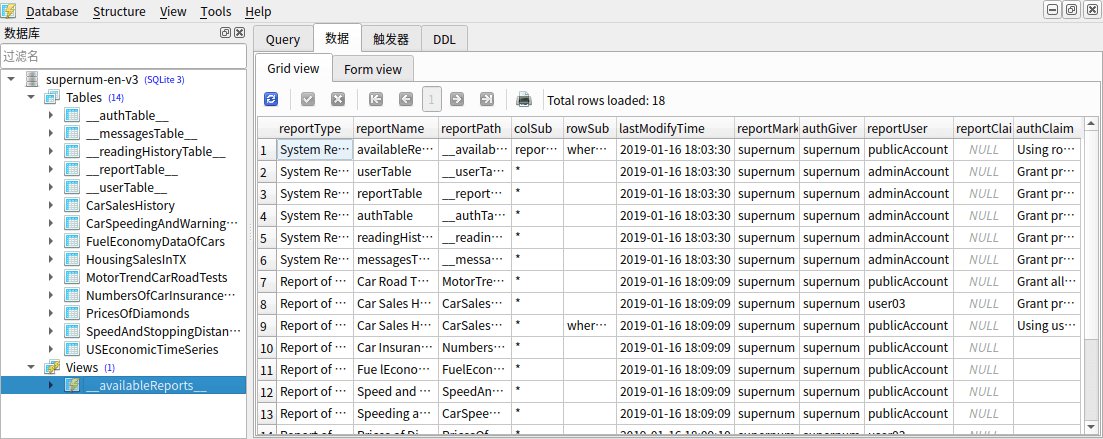Available Reports
The first report that the report platform displays by default is a list of reports that users can view. For different versions of products, the way to achieve this function is slightly different.
Primary Edition
For the Primary Edition, you just need to create a __availableReports__ view, and insert the location, name, category and other information of the view as the first data into the __reportTable__ table. You can refer to the following SQL statements to create the __availableReports__ view.
1
2
3
4
5
6
7
8
9
CREATE VIEW IF NOT EXISTS __availableReports__ as
SELECT
reportMarker,
reportType,
reportName,
reportPath,
lastModifyTime,
reportClaim,
FROM __reportTable__
Membership Edition
For Membership Edition, __availableReports__ is not only the place where defines which reports users can view, but also the important basis for unification of eport management system and Authentication management system. You can refer to the following SQL statements to create the __availableReports__ view.
1
2
3
4
5
6
7
8
9
10
11
12
13
14
15
16
CREATE VIEW IF NOT EXISTS __availableReports__ as
SELECT
A.reportType,
A.reportName,
A.reportPath,
B.colSub,
B.rowSub,
A.lastModifyTime,
A.reportMarker,
B.authGiver,
B.reportUser,
A.reportClaim,
B.authClaim
FROM __reportTable__ AS A
INNER JOIN __authTable__ AS B
ON A.reportName = B.reportName;
After creating the __availableReports__ View, you need to insert the reportPath, reportName, reportType of the view as the first record into the __reportTable__ table, and assign appropriate columns and record query conditions to the public account in the __authTable__ table. Of course, you can also operate directly in __availableReports__. The first record of the available report should be shown in the following figure.
Custom Edition
For the Advanced Customization Edition, we will help you build the appropriate __availableReports__ View based on your customized content.
__availableReports__ is a view, once created, do not make any changes to it. All you need to do is maintain the eport management system and the Authentication management system, and leave the rest to the view and supernum.

